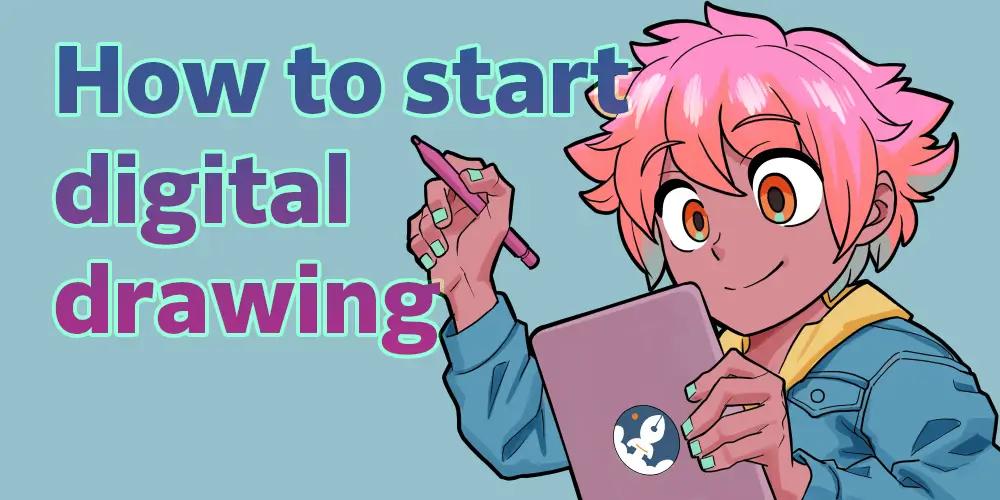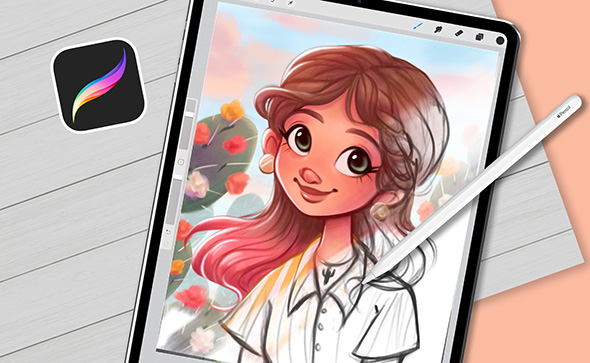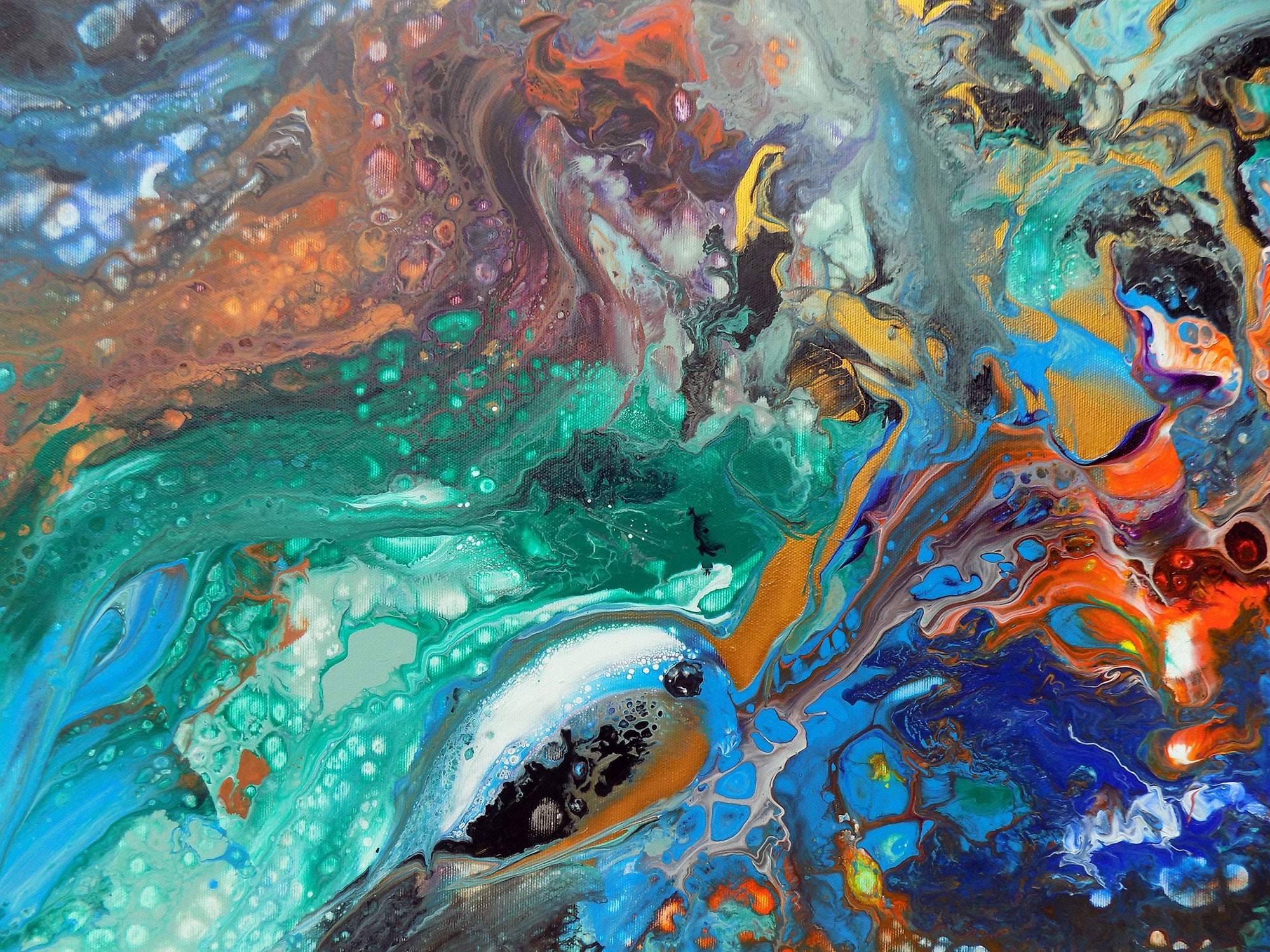How To Create Digital Art
डिजिटल कला बनाने में डिजिटल उपकरण और सॉफ़्टवेयर का उपयोग किया जाता है जिससे विज़ुअल कला उत्पन्न होती है। यहां कुछ सामान्य चरण हैं जो आपको डिजिटल कला बनाने की शुरुआत में मदद कर सकते हैं:
अपने उपकरण चुनें: कला बनाने के लिए डिजिटल उपकरण चुनें। यह एक ग्राफिक्स टैबलेट (जैसे कि वेकॉम), स्टाइलस या डिजिटल पेन, और सॉफ़्टवेयर जैसे कि Adobe Photoshop, Adobe Illustrator, Procreate, Clip Studio Paint, या Krita शामिल हो सकते हैं।
अपना कार्यस्थल सेट करें: अपने डिजिटल कार्यस्थल को व्यवस्थित करें, अपने ग्राफिक्स टैबलेट को अपने कंप्यूटर से कनेक्ट करें और अपने चयनित सॉफ़्टवेयर को चालू करें।
ब्रशेज़ और उपकरण के साथ प्रयोग करें: अपने चयनित सॉफ़्टवेयर में उपलब्ध ब्रशेज़, पेन, पेंसिल, और अन्य डिजिटल उपकरणों के साथ परिचित हो जाएं। अपने शैली और पसंद के लिए सबसे अच्छा क्या है यह खोजने के लिए विभिन्न ब्रश साइज़, टेक्सचर, और सेटिंग का प्रयोग करें।
अपनी विचारों की स्केचिंग करें: अपने विचारों को डिजिटल रूप में स्केच करना शुरू करें। आपके कार्य की मौलिक संरचना और तत्वों को पकड़ने के लिए हल्की धाराएँ और असंगत कोटों का उपयोग करें।
लेयर्स जोड़ें: अपने डिजिटल कला सॉफ़्टवेयर में लेयर्स का लाभ लें। अपने कार्य के विभिन्न तत्वों के लिए अलग-अलग लेयर का प्रयोग करें ताकि संपादन और समायोजन को सरल बनाया जा सके।
संदर्भ छवियों का प्रयोग करें: यदि आपको प्रेरणा या संदर्भ की आवश्यकता है, तो अपने डिजिटल कार्यस्थल में संदर्भ छवियों को आयात करें। ये छवियाँ आपको अपनी कला में अनुपात, एनाटॉमी, प्रकाश, और अन्य विवरणों में मदद कर सकती हैं।
रंग के साथ प्रयोग करें: अपनी डिजिटल कला में विभिन्न रंगों और तकनीकों की जाँच करें। आप डिजिटल पेंटिंग तकनीक का उपयोग करके रंगों को मिलाकर, ग्रेडिएंट्स बनाने के लिए, और अपनी कला में गहराई जोड़ने के लिए उपयोग कर सकते हैं।
विवरण और टेक्सचर जोड़ें: अपनी कला में विवरण और टेक्सचर पर ध्यान दें। गहराई और दृश्यमान रूप से दिलचस्पी जोड़ने के लिए विभिन्न ब्रश, पैटर्न, और टेक्सचर्स का प्रयोग करें।
प्रभाव और फिल्टर के साथ प्रयोग करें: अपनी डिजिटल कला सॉफ़्टवेयर में उपलब्ध विभिन्न प्रभाव और फिल्टर के साथ प्रयोग करें। ये उपकरण आपको अपनी कला को बेहतर बनाने, विशेष प्रभाव जोड़ने, या अनूठे दृश्य स्टाइल बनाने में मदद कर सकते हैं।
अभ्यास और प्रयोग करें: किसी भी कला के रूप में, डिजिटल कला बनाने में अभ्यास और प्रयोग की आवश्यकता होती है। नए तकनीकों की कोशिश करने, अपनी ग़लतियों से सीखने, और समय के साथ अपने कौशल को परिष्कृत करने में डरिए मत।
प्रतिक्रिया और प्रेरणा की खोज करें: अपनी डिजिटल कला को दूसरों के साथ साझा करें और अन्य कलाकारों या ऑनलाइन समुदायों से प्रतिक्रिया के लिए प्रेरणा लें। अन्य कलाकारों से प्रेरणा लें और विभिन्न शैलियों और शैलियों को अन्वेषित करने के लिए विभिन्न शैलियों और जेनर की खोज करें ताकि आपकी रचनात्मक सीमाएं विस्तारित हो सकें।
अपनी कला को सहेजें और निर्यात करें: जब आप अपने डिजिटल कला से संतुष्ट हों, तो अपने काम को उच्च रिज़ॉल्यूशन फॉर्मेट में सहेजें। फिर आप अपनी कला को प्रिंट, ऑनलाइन साझा करने या अपने पोर्टफोलियो में प्रदर्शित करने के लिए अपनी कला को निर्यात कर सकते हैं।
ध्यान रखें, डिजिटल कला बनाना एक अन्वेषण और रचनात्मकता का सफर है। इस प्रक्रिया का आनंद लें और डिजिटल माध्यम के माध्यम से अपनी भावनाओं को व्यक्त करने का आनंद लें!
Creating digital art involves using digital tools and software to produce visual artwork. Here are some general steps to help you get started with creating digital art:
Choose Your Tools: Decide on the digital tools you want to use for creating art. This could include a graphics tablet (such as Wacom), a stylus or digital pen, and software like Adobe Photoshop, Adobe Illustrator, Procreate, Clip Studio Paint, or Krita.
Set Up Your Workspace: Arrange your digital workspace by connecting your graphics tablet to your computer and launching your chosen software.
Experiment with Brushes and Tools: Familiarize yourself with the brushes, pens, pencils, and other digital tools available in your chosen software. Experiment with different brush sizes, textures, and settings to find what works best for your style and preferences.
Sketch Your Ideas: Start by sketching your ideas digitally. Use light strokes and rough outlines to capture the basic composition and elements of your artwork.
Add Layers: Take advantage of layers in your digital art software. Use separate layers for different elements of your artwork to make editing and adjustments easier. This also allows you to work non-destructively, meaning you can make changes without altering the original artwork.
Use Reference Images: If you need inspiration or reference, import reference images into your digital workspace. These images can help you with proportions, anatomy, lighting, and other details in your artwork.
Experiment with Color: Explore different color palettes and techniques for adding color to your digital artwork. You can use digital painting techniques to blend colors, create gradients, and add depth to your artwork.
Add Details and Textures: Pay attention to details and textures in your artwork. Experiment with different brushes, patterns, and textures to add depth and visual interest to your digital art.
Experiment with Effects and Filters: Explore the various effects and filters available in your digital art software. These tools can help you enhance your artwork, add special effects, or create unique visual styles.
Practice and Experiment: Like any form of art, creating digital art takes practice and experimentation. Don't be afraid to try new techniques, learn from your mistakes, and refine your skills over time.
Seek Feedback and Inspiration: Share your digital artwork with others and seek feedback from fellow artists or online communities. Look for inspiration from other artists and explore different styles and genres to expand your creative horizons.
Save and Export Your Artwork: Once you're satisfied with your digital artwork, save your work in a high-resolution format. You can then export your artwork for printing, sharing online, or showcasing in your portfolio.
Remember, creating digital art is a journey of exploration and creativity. Enjoy the process and have fun expressing yourself through digital media.







0 Comments